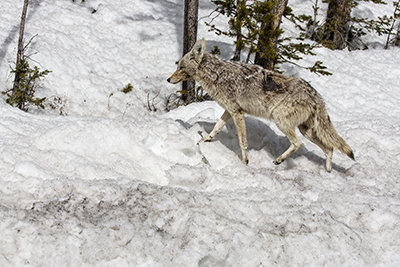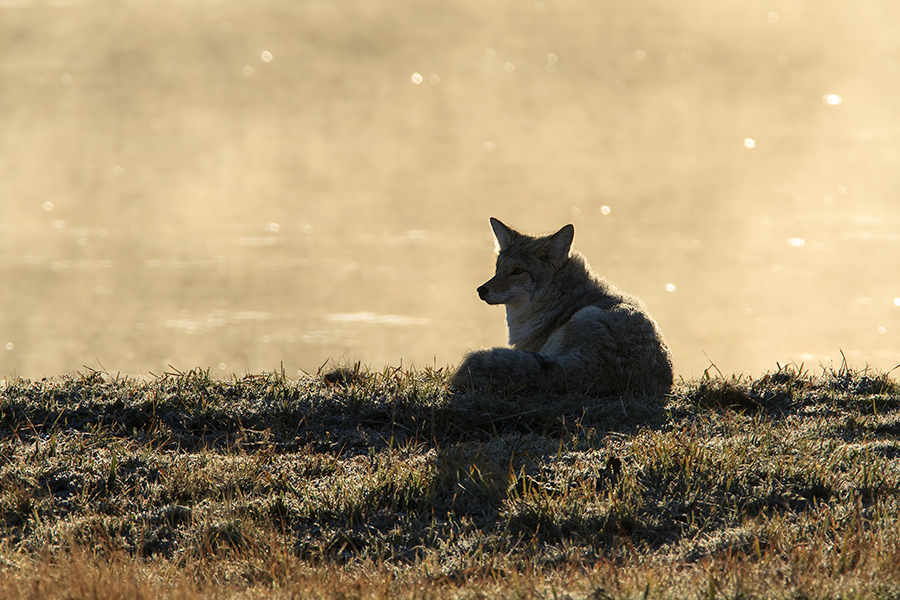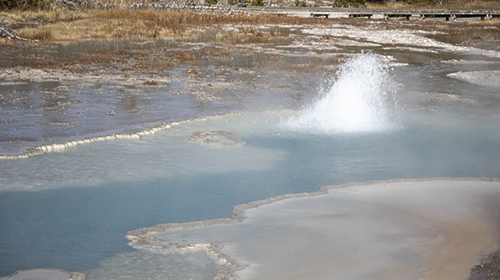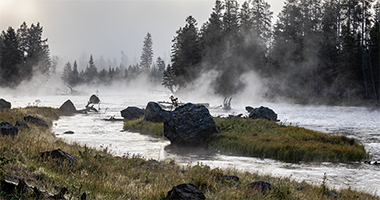Coyotes

There are 19 different subspecies of coyotes residing from Canada to Central America. Coyotes used to be only in the prairies and deserts of central and Western North America. But with humans opening more habits, the coyotes have spread further afield. Coyotes are so adaptable that they now thrive in cities.
Yellowstone National Park is home to three canines: wolves, coyotes, and foxes. The coyote is the middle of the three, size -ise. They weigh 25-35 pounds. The average lifespan is 6 years up to 13 years.
Coyote tails are bushy and held down when running. Look for a black tip on the tail.
Coyotes' forelegs, sides of head, muzzle, and paws are reddish brown. Their face and muzzle are pointed.


They primarily eat small mammals such as voles, prairie dogs, ground squirrels, and mice. But they also will eat carrion, and you can see them waiting their turn at a carrion feeding site. However, coyotes do consume a significant amount of fruits and vegetables. So, coyotes are omnivores. They are good at pest control.
Coyotes mate for life and are monogamous.
Both parents work together to raise, feed, and defend their pups. Coyotes are known to have 1 to 19 pups in a litter. This is a defensive measure against the high juvenile mortality rate. Approximately 50 - 70% of the pups do not survive to adulthood. The pups emerge from the den 3 - 4 weeks after birth. In Yellowstone, they are born in April and come out of the den in May. They are fully weaned 35 days after birth. So, the pups you see in the above picture are still reasonably young since they were still taking milk.
Coyotes have large ears proportionally to their head size. When they are zeroing in on prey, their ears are pointed up and forward.

Check out this page to compare wolves, coyotes, and foxes seen in Yellowstone National Park.
















